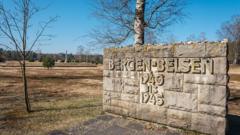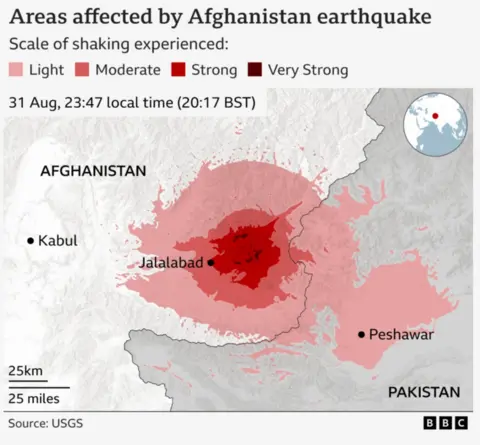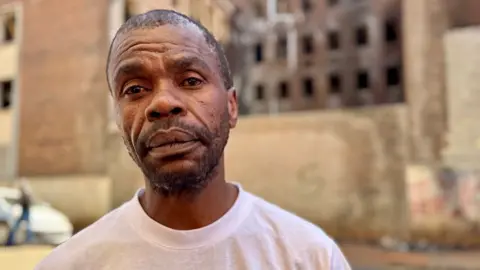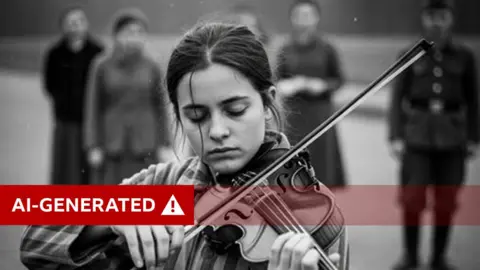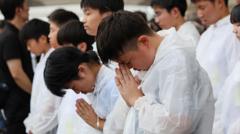The article text:
In April 1945, as British and Canadian troops advanced towards Bergen-Belsen, they encountered a staggering scene of horror that starkly revealed the atrocities committed within Nazi concentration camps. Liberation unveiled thousands of unburied bodies and tens of thousands of malnourished survivors, stark evidence of a tragedy believed only through rumors and limited testimonies until that moment.
To commemorate the 80th anniversary of this liberation, survivors gathered at the camp on Sunday, reflecting on their experiences of unimaginable suffering. Notably, Mala Tribich, now 94, recalled the camp as “a place of skeletons,” and described witnessing the horrific sight of guards dragging lifeless bodies. Another survivor, Esther Alice, shared the painful memory of losing her mother in the camp at just 11 years old.
Despite the warmth of the sun during the commemorative events, the grim history of Bergen-Belsen continues to evoke chilling reflections. While many concentration camps were destroyed in an attempt to erase evidence of atrocities, Bergen-Belsen remained a haunting testament, with its structures intact and filled with survivors, witnesses, and perpetrators.
The camp, while lacking gas chambers, was a site of immense suffering due to overcrowding and inadequate care, leading to the deaths of thousands in the weeks leading up to liberation. From January to April 1945 alone, it is estimated that between 30,000 and 50,000 prisoners perished, many of whom were Jews, alongside other marginalized groups.
As survivors and their families commemorated lost lives on Sunday, British Jewish veterans also participated, laying wreaths in honor of those who never made it out of the camp. A psalm was recited by UK Chief Rabbi Sir Ephraim Mirvis, underscoring the solemnity of the occasion.
Today, the remnants of Bergen-Belsen are sparse, with the original huts having been burned following liberation to contain disease. Remembrance stones and memorials now exist amid the serene landscape, serving as poignant markers of a tragic history that continues to influence our understanding of the Holocaust. The inscription “Hier ruhen 5,000 toten – here rest 5,000 dead” poignantly encapsulates the weight of remembrance that lingers over the site, a stark reminder of the atrocities that occurred within its confines.
In April 1945, as British and Canadian troops advanced towards Bergen-Belsen, they encountered a staggering scene of horror that starkly revealed the atrocities committed within Nazi concentration camps. Liberation unveiled thousands of unburied bodies and tens of thousands of malnourished survivors, stark evidence of a tragedy believed only through rumors and limited testimonies until that moment.
To commemorate the 80th anniversary of this liberation, survivors gathered at the camp on Sunday, reflecting on their experiences of unimaginable suffering. Notably, Mala Tribich, now 94, recalled the camp as “a place of skeletons,” and described witnessing the horrific sight of guards dragging lifeless bodies. Another survivor, Esther Alice, shared the painful memory of losing her mother in the camp at just 11 years old.
Despite the warmth of the sun during the commemorative events, the grim history of Bergen-Belsen continues to evoke chilling reflections. While many concentration camps were destroyed in an attempt to erase evidence of atrocities, Bergen-Belsen remained a haunting testament, with its structures intact and filled with survivors, witnesses, and perpetrators.
The camp, while lacking gas chambers, was a site of immense suffering due to overcrowding and inadequate care, leading to the deaths of thousands in the weeks leading up to liberation. From January to April 1945 alone, it is estimated that between 30,000 and 50,000 prisoners perished, many of whom were Jews, alongside other marginalized groups.
As survivors and their families commemorated lost lives on Sunday, British Jewish veterans also participated, laying wreaths in honor of those who never made it out of the camp. A psalm was recited by UK Chief Rabbi Sir Ephraim Mirvis, underscoring the solemnity of the occasion.
Today, the remnants of Bergen-Belsen are sparse, with the original huts having been burned following liberation to contain disease. Remembrance stones and memorials now exist amid the serene landscape, serving as poignant markers of a tragic history that continues to influence our understanding of the Holocaust. The inscription “Hier ruhen 5,000 toten – here rest 5,000 dead” poignantly encapsulates the weight of remembrance that lingers over the site, a stark reminder of the atrocities that occurred within its confines.

